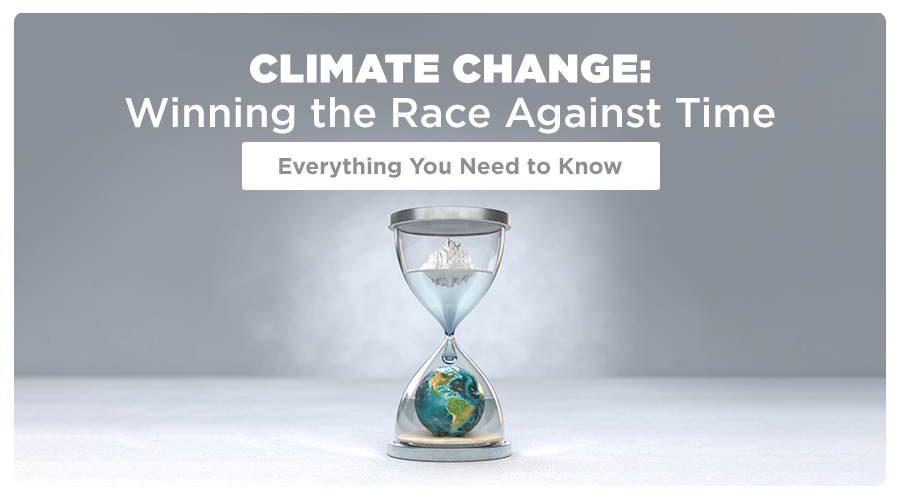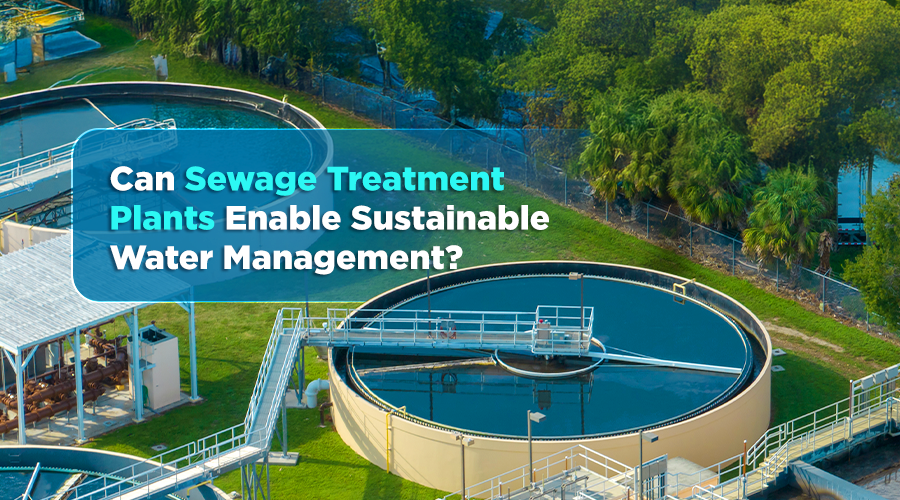Everything You Need to Know
“You cannot get through a single day without having an impact on the world around you. What you do makes a difference, and you have to decide what kind of difference you want to make.” – Jane Goodall
Introduction:
Imagine having to dress up as different species of animals, birds, reptiles, amphibians, insects and plants to explain to the younger generation what they were and why they’re gone. How would you answer the younger generation?
How does it feel waking up to news like this on a daily basis:
- Districts in India hit by flood with damages to homes and countless lives lost
- Heavy rains ravage Uganda and Ethiopia
- Haiti struck by an earthquake and a hurricane
- Wildfires continue ravaging Western Canada
Scary, isn’t it?
The situation can turn grave if we fail to act on it now. What you just imagined or read are instances the world is already witnessing, and they all have a common thread – CLIMATE CHANGE.
What is Climate Change?
Before getting to the nitty-gritty of climate change, it is important to understand the difference between weather and climate. Weather is the changes we see and feel outside on a daily basis. It varies from place to place. It could be raining heavily one day and sweltering the next. It could be cold one day and humid the next. Climate is the weather of a place. It can be different for different seasons. Typically, a place would be warm and dry in the summer, and wet and cool during the monsoons. When all the climates are combined, they form the Earth’s climate, an amalgamation of the world’s climate.
This brings us to the next big question of climate change. What comes to your mind when you think of climate change?
Climate change is the change in the usual weather of a place. It could also indicate a change in the Earth’s climate. While the weather can change in a few hours, climate change occurs over hundreds or even millions of years. Climate change is the long-term alteration of the Earth’s climate and weather patterns.
In the past few decades, human activities have resulted in the release of ample amounts of carbon dioxide and other greenhouse gases in the environment. These gases have further trapped additional heat in the earth’s lower atmosphere, impacting the global climate.
Back in the 1800s, there were many experiments that suggested that human-produced carbon dioxide and other gases could collect in the atmosphere and insulate the Earth. In the 1950s, the carbon dioxide reading offered some insights on global warming. This data grew over time and highlighted the dire consequences climate change could pose. Global warming was placed in the spotlight in 1988 when the summer recorded the hottest temperature back then. 1988 also witnessed widespread drought and wildfires in the United States. In 1988, NASA scientist James Hansen addressed the issue by stating that “99% sure that global warming was upon us.”
Why is climate change a concern?
Climate change is a major concern because of the following reasons – increasing carbon dioxide, increasing global temperature, decline in the Arctic Sea ice, melting of ice sheets, increasing sea level and changes in ocean heat.
- Carbon dioxide:
According to NASA’s findings, human activities have raised atmospheric concentrations of carbon dioxide by 48% above pre-industrial levels starting in 1850. Data for August 2021 shows carbon dioxide at 446 parts per million.

The graph indicates a steady increase in the carbon dioxide levels in the atmosphere.
- Global Temperature:
According to NASA’s data on global temperature, nineteen of the hottest years have occurred since 2000, with the exception of 1998. The year 2020 tied with 2016 for the hottest year on record since record-keeping began in 1880.

This graph shows a constant fluctuation in the temperature, with the temperature steadily increasing since the 1980s.
According to the report by Intergovernmental Panel on Climate Change (IPCC), here are the changes in the global surface temperature, observed and stimulated by human and natural factors and only natural factors, since 1850 – 2020.
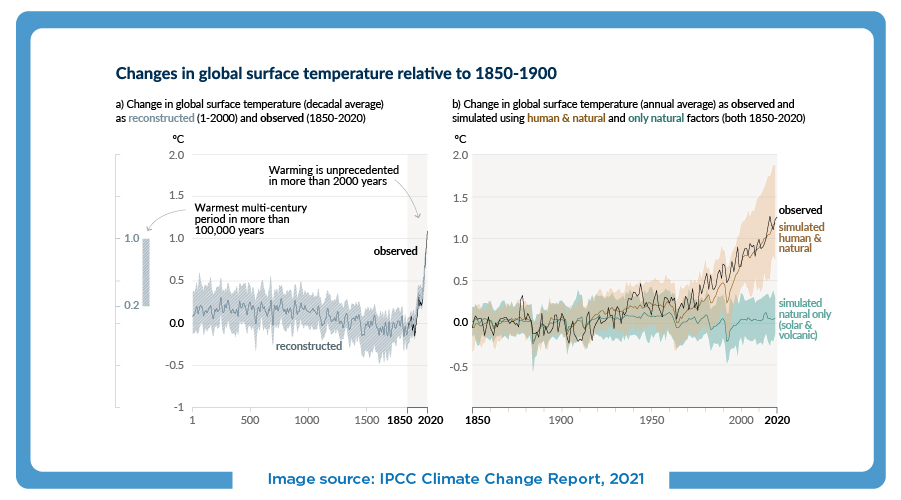
The report indicates an increased level of human activities, resulting in a steep increase in the global temperature.
- Arctic Sea Ice
According to data by NASA and National Snow and Ice Data Center (NSIDC), the Arctic sea ice extent has declined significantly in all months since satellite measurements began in 1979, with September showing the largest declines. The last 15 Septembers show the lowest values, with the current rate of change being at 13% per decade.
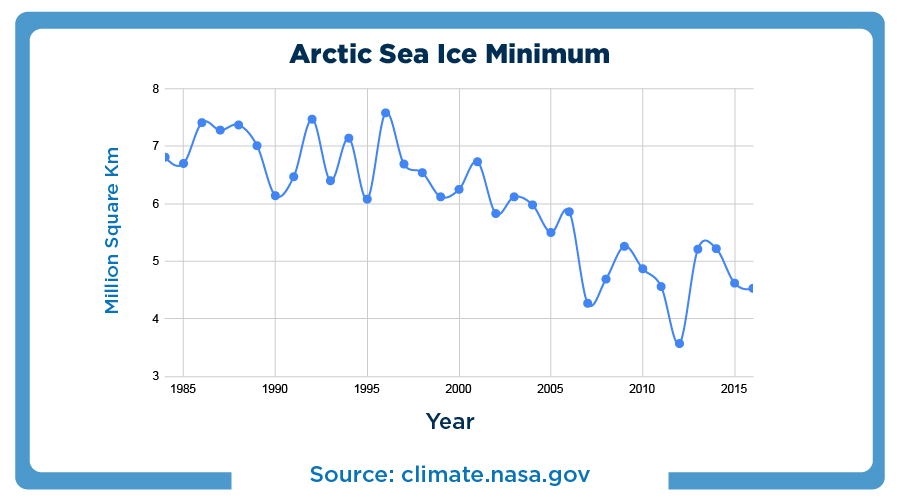
- Ice Sheets
Data from NASA’s GRACE and GRACE Follow-On satellites show that Greenland and Antarctic ice sheets are losing significant amounts of land-based ice as a result of human-caused global warming.
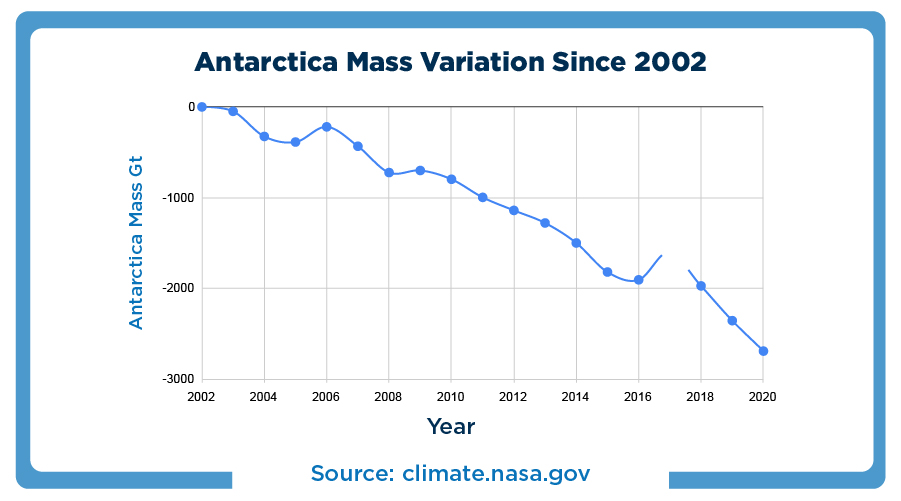

- Sea Level
Sea level rise is caused primarily by two factors related to global warming: the added water from melting ice sheets and glaciers and the expansion of seawater as it warms.
Data reveals that the sea levels are currently increasing at a rate of 3.4 millimetres per year.

- Ocean Heat
One might wonder about the role of ocean heat in climate change, but they play a significant role in climate change!
The Earth’s surface has more than 70% of water. Oceans have a high heat capacity and have absorbed 90% of the warming that has occurred in recent decades due to increasing greenhouse gases. It might sound unbelievable, but the top few meters of the ocean store as much heat as the Earth’s entire atmosphere!
When the oceans warm up, the sea level increases due to thermal expansion, coral bleaching (starving of corals) occurs, and the Earth’s ice sheets begin melting at an accelerated rate. Ocean warming also intensifies hurricanes and brings about a general alteration in ocean health.
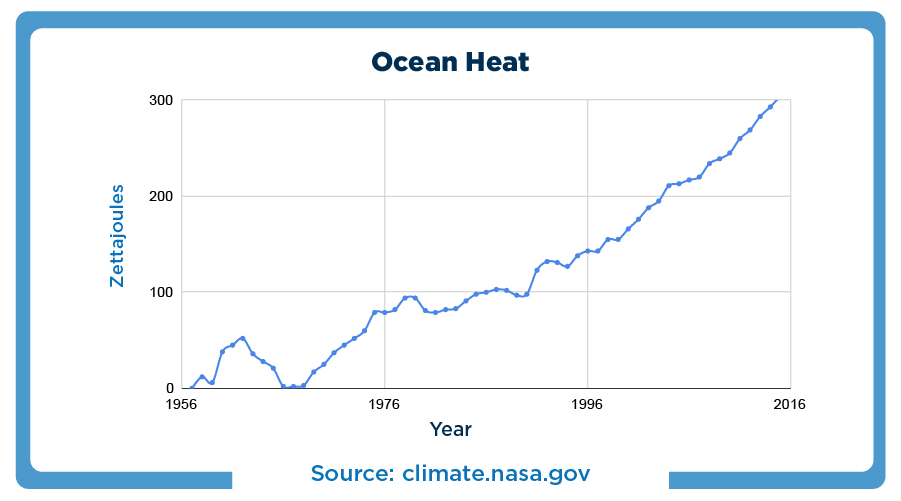
Data collected by NASA shows 90% of global warming occurs in the ocean, causing the water’s internal heat to increase. The last ten years were the ocean’s warmest decade since at least the 1800s. The year 2020 was the ocean’s warmest recorded year and saw the highest global sea level.
Climate change is not a far-off, future problem. In reality, it is happening right now!
Climate Change at a Global Level:
According to National Centers for Environmental Information, the following anomalies have been observed in January and August 2021:
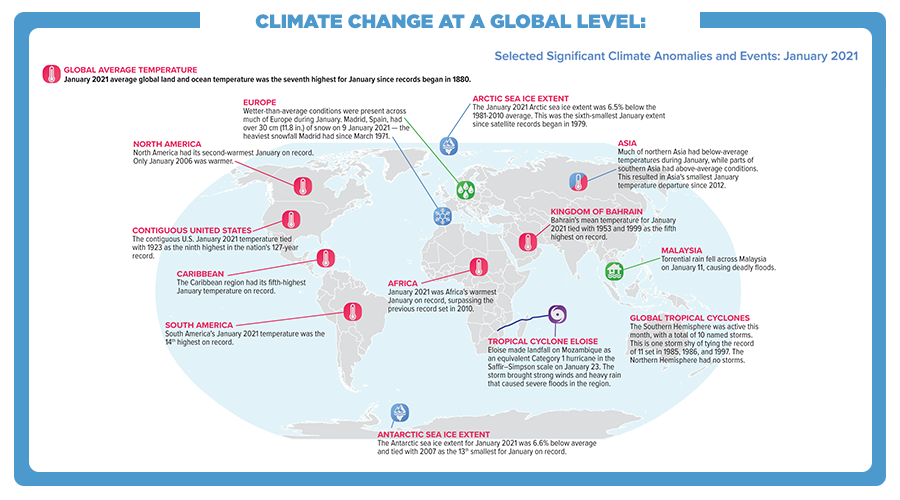

These comparative events highlight how the changing climate continues to impact the world on a daily basis.
Impact of Climate Change:
Climate change can trigger multiple adverse effects on the planet, putting all species, including humans, at risk. An increasing temperature can influence not just the physical system but also biological and human systems.
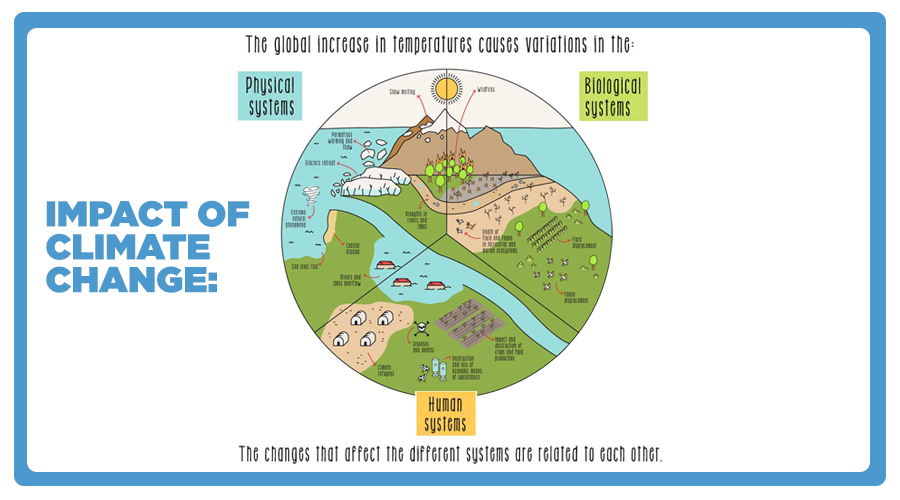
- Physical System
- Melting of ice, glacial regression, flooding of rivers and lakes, droughts, coastal erosion, increasing sea level and other extreme phenomena can be observed in the physical system.
- Melting glaciers can increase the sea level, which exposes darker ocean waters. These darker ocean waters can absorb more sunlight than ice, heating the ocean more and fastening the cycle of melting and heating.
- As the oceans get hotter, they expand and become more acidic. When oceans get hotter, they also expand. A third of carbon dioxide emissions end up in the ocean, which makes it more acidic, and this results in the dissolution of the shells of sea creatures.
- Heatwaves have become more frequent across the world. There are extreme weather events like hurricanes, droughts and wildfires, which are intensifying with each passing day.
- Human Systems
- Destruction of crops, fluctuations in food production, increase in disease and death, destruction and loss of economic livelihoods and migrations of climate refugees can be observed in the human systems.
- Climate change impacts agriculture to a great extent. Farmers are finding it difficult to keep up with the shifts in weather patterns. Extreme events threaten crop yields as well.
- A warmer, polluted air affects all the species. Smog, a ground-level ozone in polluted areas, affects the lungs and triggers asthma. Smoke from wildfires reduces the quality of air. Warmer freshwater allows disease-causing agents like bacteria to thrive.
- Extreme events like hot weather or floods damage infrastructure and disrupt transportation.
- Biological Systems
- Death of flora and fauna in different ecosystems, wildfires, displacement of flora and fauna can be noticed in the biological systems.
- As ice melts, ice-dependent animals like walruses and polar bears struggle to survive.
- Coral reefs, which are highly sensitive to small changes in ocean temperature, are now facing the biggest threat owing to climate change.
- Milder winters and long summers allow the thriving of tree-killing insects. Prolonged droughts have weakened the trees’ defence mechanisms.
Climate Change in India:
Heatwaves, droughts, incessant rains, don’t all these sound too familiar?
2020 saw India dealing with the pandemic and extreme and erratic rainfall, floods, droughts, cold waves, cyclones, and thunderstorms.
The country witnessed:
- Record-breaking cold wave conditions between December 2019 and January 2020 in northern India.
- February 2020 witnessed unusual and erratic rains in many parts of the country, which picked up in March.
- The heavy rain and storms led to cooler-than-normal temperatures across north, central and east India. The maximum temperatures recorded by the Indian Meteorological Department were below normal in large parts of north, east, central and southern parts of the country in May.
These are just some instances of climate change in India.
The World Bank’s climate knowledge portal finds that:
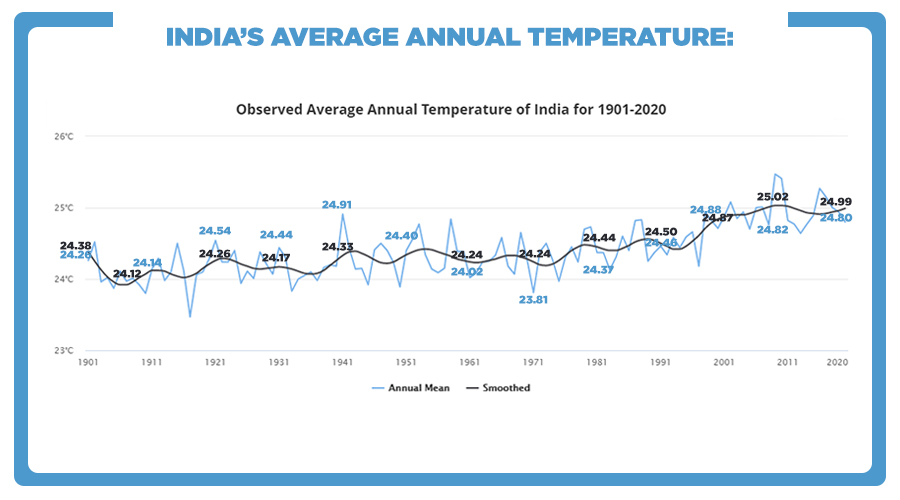
- India’s average annual mean temperature during 1901-2020 showed an increasing trend of 0.62°C/100 years, with a significant increasing trend in maximum temperature (0.99°C/100 years) and a relatively lower increasing trend (0.24°C/100 years) in minimum temperature. This warming trend is highest during the post-monsoon season (0.88°C/100 years) followed by the winter season (0.68°C/100 years).
- Temperature increases in India have been observed to be more pronounced in daily maximum temperatures than in daily minimums. Increases in both minimum and maximum temperatures have been observed across the majority of the Indian territory.
Since the middle of the twentieth century, India has witnessed a rise in average temperature; a decrease in monsoon precipitation; a surge in extreme temperature and rainfall events, droughts, and sea levels; and an increase in the intensity of severe cyclones, alongside other changes in the monsoon system. There is compelling scientific evidence that human activities have influenced these changes in regional climate. According to the findings of Assessment of Climate Change over the Indian Region:
- In the recent 30-year period (1986–2015), temperatures of the warmest day and the coldest night of the year have risen by about 0.63°C and 0.4°C, respectively.
- Sea surface temperature of the tropical Indian Ocean has risen by 1°C on average during 1951–2015, markedly higher than the global average warming of 0.7°C, over the same period.
- Ocean heat content in the upper 700 metres of the tropical Indian Ocean has also exhibited an increasing trend over the past six decades (1955–2015), with the past two decades (1998–2015) having witnessed a notably abrupt rise.
- The summer monsoon precipitation (June to September) over India has declined by around 6% from 1951 to 2015.
- There has been a shift in the recent period toward more frequent dry spells (27% higher during 1981–2011 relative to 1951–1980) and more intense wet spells during the summer monsoon season.
- The overall decrease of seasonal summer monsoon rainfall during the last 6–7 decades has led to an increased propensity for droughts over India.
- The Hindu Kush Himalayas (HKH) experienced a temperature rise of about 1.3°C during 1951–2014. Several areas of HKH have experienced a declining trend in snowfall and also retreat of glaciers in recent decades. In contrast, the high-elevation Karakoram Himalayas have experienced higher winter snowfall that has shielded the region from glacier shrinkage.
Climate Change in Bengaluru:
What comes to your mind when you think about Bengaluru’s climate?
Centuries ago, Bengaluru was a rocky plateau containing grassland, scrub and thorn forest. It was Kempe Gowda’s vision of building a city from scratch that brought Bengaluru to life. He started his vision by creating a perennial supply of water, as a city, just like any other lifeform, cannot exist without water. Many tanks were built, and numerous canals were introduced to connect them. This water culture emphasized conserving and protecting it. For many centuries after this, the lakes in Bengaluru were pristine. As the population grew, the water demand also grew. To attract rain, Kempe Gowda and his successors decided that nothing could be better than a forest. A lot of investment went into tree plantations. With the passing years, Bengaluru came to life because of the thriving trees and ecosystem, which started influencing the climate. The water released from the trees as transpiration and the lakes as evaporation formed low-lying clouds and then came down as gentle showers. With the dropping temperatures, Bengaluru became the coolest city in the South and later the city with the coolest summer in India. The problem of water scarcity was solved, and Vrishabhavati started flowing out of the city perennially.
Bengaluru has transformed significantly over the past few decades. An observation by Dr T.V. Ramachandra from the Indian Institute of Science, Bengaluru, highlights the following:
- The city’s urbanisation has led to Bengaluru’s Land Surface Temperature (LST) increasing from 33.08℃ in 1992 to 41℃ in 2017.
- The city’s green cover has come down alarmingly from 68% in 1973 to 6% in 2017.

- Owing to unplanned growth, Bengaluru’s land usage or concretisation has increased by 925% since 1970.
- 54% of lakes in Bengaluru have been encroached on for buildings. A field survey of all lakes (in 2007) showed that nearly 66% of lakes were sewage fed, 14% were surrounded by slums, and 72% showed loss of catchment area.
- A report by Karnataka State Natural Disaster Monitoring Centre, June 2020, shows that Bengaluru’s rainfall patterns have been changing and that it is an indicator of climate change.
IPCC and Climate Change:
The Intergovernmental Panel on Climate Change (IPCC) was established in 1989 under the United Nations to provide a scientific view of climate change and its political and economic impacts. IPCC’s fifth assessment report that was published in 2014 formed the basis for negotiations of the Paris Agreement in 2015.
Breaking down IPCC’s 2021 report on climate change:
- Overview: The temperature across the globe has already risen by 1.1 degrees Celsius since the pre-industrial 19th century. This has a high probability of going up to 1.5 degrees in the next few years. Immediate steps must be taken to reduce and check the emissions and avoid breaching the 2-degrees line, which would result in catastrophic consequences for the planet.
- Regarding the planet: Earth will experience more heatwaves, rains, droughts, floods and wildfires. The sea levels continue to increase, and the ice glaciers are melting at an alarming rate. The ongoing climate change will not just result in this but will also make food and drinking water scarce.
- Regarding India: India will experience erratic monsoons and will also witness increased heat waves. The changes in the climate may cause the Himalayas to experience incidents similar to what occurred in Uttarakhand.
- Actions: IPCC recommends immediate reductions in greenhouse emissions. Climate change and its further implications can be avoided to a certain extent if the global emissions turn net-zero by 2050.
Solutions against Climate Change:
“While the problem can sometimes seem overwhelming, we can turn things around – but we must move beyond climate talk to climate action.” – Ted Turner

The United Nations Secretary-General has proposed six climate-positive actions for governments across the world to follow:
- Green transition: Investments must accelerate the decarbonization of all aspects of our economy
- Green jobs and sustainable and inclusive growth
- Green economy: making societies and people more resilient through a transition that is fair to all and leaves no one behind
- Invest in sustainable solutions: fossil fuel subsidies must end, and polluters must pay for their pollution
- Confront all climate risks
- Cooperation – no country can succeed alone; everyone needs to work together to tackle the challenges posed by climate change
Steps Taken in India:
While nations worldwide have taken many steps to tackle the threat posed by climate change, India has also taken specific measures to handle the issue. Under the Paris agreement, India had committed to cut greenhouse gas emissions intensity of its gross domestic product 33% to 35% by 2030, increase non-fossil fuel power capacity to 40% from 28% in 2015 and substantially boost forest cover to reduce carbon dioxide.
Many Indian cities are taking up numerous initiatives, from reducing monoculture to protecting water bodies to reducing flooding and boosting resilience as monsoons become stronger and more unpredictable.
Sustainability is one common goal that many nations are working towards. Sustainability with regard to climate change means judicious, efficient and conscious use of resources.
Solutions to tackle Climate Change in Bengaluru:
When it comes to solutions to tackle climate change concerning Bengaluru, individuals at many levels have taken different steps to work towards a sustainable future.
At the government level, The Environmental Management and Policy Research Institute (EMPRI) has established the Centre for Climate Change to assess the scientific, technical and socio-economic data relevant to climate change and understand its potential impacts. EMPRI has also been designated as the State Nodal Agency for Climate Change for Karnataka
B.PAC’s B.GREEN program is one such initiative that works towards tackling climate change. It focuses on advancing environmental sustainability, socio-economic upliftment, climate resilience and quality of life in Bengaluru.
Apart from this, many individuals and organizations are doing their bit to tackle the issue of climate change.
Here are some daily actions that can help prevent climate change:
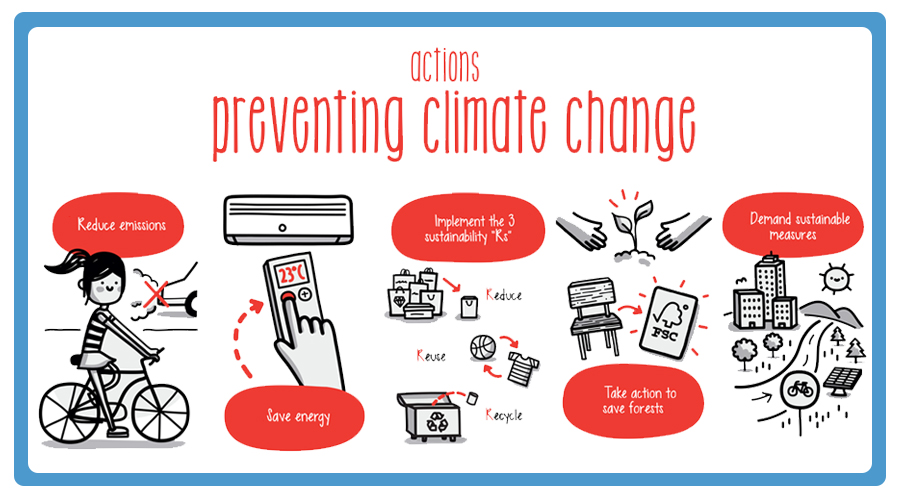
- Reduced emissions: Opting for sustainable modes of transport like bicycles and public transport over cars can help cut down emissions to a great extent.
- Saving energy: Being mindful of appliances and turning them off when not in use is a great way to conserve energy.
- Practising sustainability: Switching to a sustainable lifestyle by reducing, reusing and recycling are significant steps towards tackling climate change.
- Plant more trees: Buying wood of sustainable origin and planting more trees are small steps one can take in the direction of reducing the impact of climate change.
- Talk the talk, walk the walk: The citizens as a collective can approach local authorities and work towards a greener future. B.PAC has put together the sustainability manifesto, which aims to make Bengaluru greener and resilient by 2030.
Food for Thought:
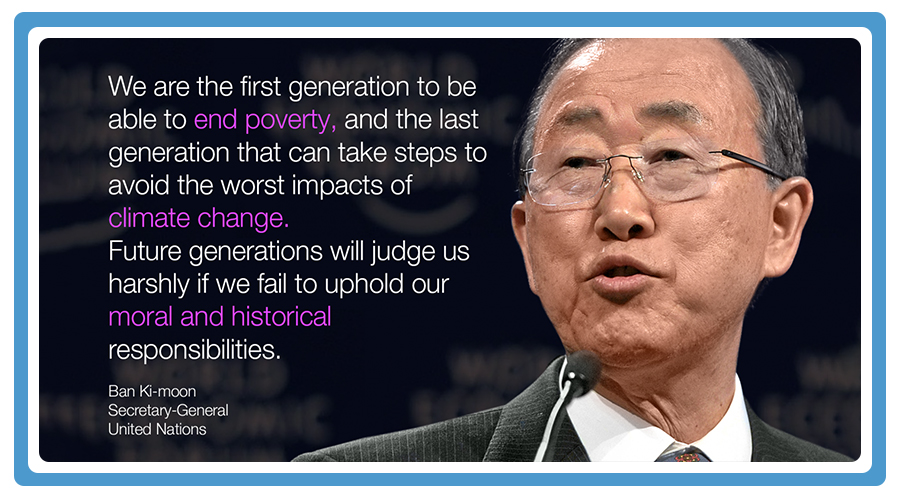
Everyone is doing their best to fight against climate change. Many nations and individuals have now realized the gravity of the situation. They are addressing the different dimensions of the issue.
As Ralph Waldo Emerson aptly states, “We do not inherit the earth from our ancestors, we borrow it from our children.” Think about it, what is the legacy that you want to leave for your future? It is okay if you choose to start small; what do you plan to do today to ensure a green and sustainable future? Your action matters!


